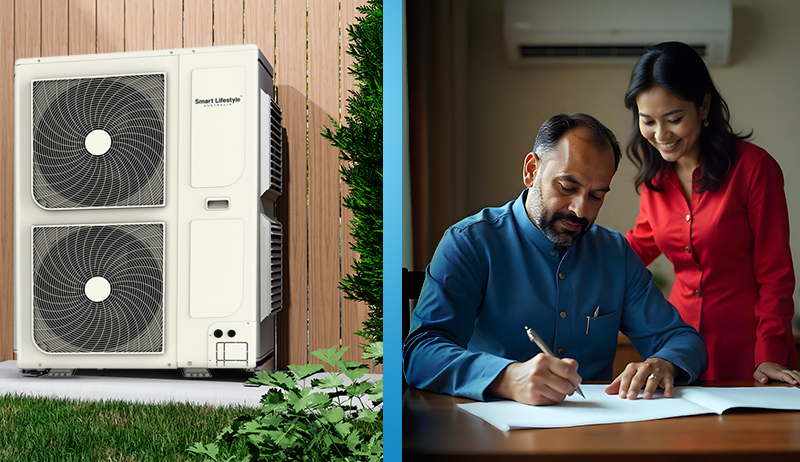Introduction Microsoft Azure and the Internet of Things (IoT)
The Internet of Things (IoT) is a rapidly growing network of physical devices embedded with sensors, software, and other technologies that allows them to connect and exchange data with each other over the internet.
This interconnectedness can lead to a wide range of benefits, from improved efficiency and productivity to new insights and opportunities.
Microsoft Azure is a cloud computing platform that offers a comprehensive set of services for building and managing IoT solutions.
These services include:
- Azure IoT Central: A managed application platform that makes it easy to build, deploy, and manage IoT applications without having to write any code.
- Azure IoT Hub: A central message routing service that connects your IoT devices to the cloud.
- Azure Digital Twins: A service that creates a digital representation of your physical environment, allowing you to simulate and analyze real-world scenarios.
- Azure IoT Edge: A platform that allows you to run data processing and analytics at the edge of the network, closer to your devices.
- Azure Sphere: A secure platform for microcontroller (MCU)-powered devices that helps to protect them from cyberattacks.
Microsoft Azure’s IoT offerings are designed to help businesses of all sizes unlock the power of the IoT. Whether you’re just starting out with a few devices or you have a large-scale deployment, Azure has the tools and services you need to be successful.
Here are some of the benefits of using Microsoft Azure for IoT:
- Reduced costs: Azure’s pay-as-you-go pricing model means you only pay for the resources you use.
- Increased efficiency: Azure’s IoT services can help you automate tasks, improve operational efficiency, and make better decisions.
- New insights: Azure’s analytics tools can help you gain insights from your IoT data that you can use to improve your products and services.
- Improved security: Azure’s security features can help you protect your devices and data from cyberattacks.
Here are some examples of how businesses are using Microsoft Azure for IoT:
- Manufacturing: Manufacturers are using Azure to connect their machines and track production data in real time. This allows them to identify and fix problems early, improve efficiency, and reduce costs.
- Retail: Retailers are using Azure to track inventory levels and customer behavior in real time. This allows them to optimize their store layout, improve customer service, and personalize marketing campaigns.
- Healthcare: Hospitals are using Azure to connect their medical devices and track patient data in real time. This allows them to provide better care, improve patient outcomes, and reduce costs.
As the IoT continues to grow, Microsoft Azure is well-positioned to be a leading provider of IoT solutions. With its comprehensive set of services and its commitment to security and innovation, Azure is helping businesses of all sizes unlock the power of the IoT to transform their operations.
Real-World Projects Using Azure IoT Central:
Azure IoT Central has become a popular choice for building and managing diverse IoT solutions without extensive coding.
Here are some examples of real-world projects across various industries to spark your imagination:
1. Remote Asset Monitoring:
- Oil & Gas: Track pressure and temperature of pipelines, reducing maintenance costs and preventing leaks.
- Construction: Monitor temperature and humidity in concrete during curing, optimizing curing time and improving quality.
- Renewable Energy: Monitor performance of wind turbines and solar panels, maximizing energy output and reducing downtime.
2. Predictive Maintenance:
- Manufacturing: Monitor factory equipment to predict failures and schedule preventive maintenance, minimizing downtime and production losses.
- Healthcare: Track and analyze vital signs of patients remotely, promoting preventive care and early intervention.
- Transportation: Monitor vehicle performance (e.g., engine temperature, tire pressure) to predict breakdowns and optimize maintenance schedules.
3. Environmental Monitoring:
- Agriculture: Monitor soil moisture and nutrient levels for precision farming, optimizing water and fertilizer usage.
- Air Quality: Track air pollution levels in real-time, prompting alerts and informing public health decisions.
- Water Management: Monitor water levels and quality in reservoirs and rivers, ensuring efficient water usage and environmental protection.
4. Smart Cities:
- Street Lighting: Automatically adjust lighting based on ambient light and pedestrian activity, saving energy and improving safety.
- Waste Management: Monitor fullness of trash bins, optimizing collection routes and reducing fuel consumption.
- Parking Management: Track occupied parking spaces in real-time, providing drivers with dynamic navigation and reducing traffic congestion.
5. Retail & Customer Experience:
- Inventory Management: Track stock levels in real-time, automatically triggering reorders and optimizing inventory costs.
- Digital Signage: Personalize store signage based on customer demographics and behavior, improving engagement and sales.
- Product Monitoring: Track temperature and humidity conditions for perishable goods, ensuring product quality and customer satisfaction.
These are just a few examples, and the possibilities are truly endless. The beauty of Azure IoT Central lies in its user-friendly interface and scalability, making it accessible to businesses of all sizes and across various industries.
https://www.exaputra.com/2024/01/microsoft-azure-and-internet-of-things.html
Renewable Energy
Before Trump, “Contempt of Court” Used to Be a Big Deal
 Most Americans, me included, are puzzled as to how the Trump administration can openly thumb its nose to the findings of our courts. Until recently, behavior like this would have wound you up in jail.
Most Americans, me included, are puzzled as to how the Trump administration can openly thumb its nose to the findings of our courts. Until recently, behavior like this would have wound you up in jail.
Renewable Energy
How Households Saved $1,200 with VEU & Air-Con Upgrade?
Renewable Energy
Air Power
 About 20 years ago, a friend asked me if I was aware that cars could run on air. I asked, delicately, what she meant, and she explained that cars can run on compressed air.
About 20 years ago, a friend asked me if I was aware that cars could run on air. I asked, delicately, what she meant, and she explained that cars can run on compressed air.
“Ah,” I replied. “Of course they can. But where does the energy come from that compresses the air?” End of conversation.
Now, it’s back. Now there are enormous swaths of the population who know so little about middle school science that they believe we can put cars on the road, in an ocean of air, and extract energy out of that air to power our automobiles.
If you’re among these morons and want to invest with some heavy-duty fraud/charlatans, here’s your opportunity. They say that it’s “self-sustaining and needs no fuel.” If that makes sense to you, be my guest.
-
Climate Change4 months ago
Guest post: Why China is still building new coal – and when it might stop
-
Greenhouse Gases4 months ago
Guest post: Why China is still building new coal – and when it might stop
-
Climate Change2 years ago
Spanish-language misinformation on renewable energy spreads online, report shows
-

 Greenhouse Gases2 years ago
Greenhouse Gases2 years ago嘉宾来稿:满足中国增长的用电需求 光伏加储能“比新建煤电更实惠”
-
Climate Change Videos2 years ago
The toxic gas flares fuelling Nigeria’s climate change – BBC News
-

 Climate Change2 years ago
Climate Change2 years ago嘉宾来稿:满足中国增长的用电需求 光伏加储能“比新建煤电更实惠”
-

 Carbon Footprint2 years ago
Carbon Footprint2 years agoUS SEC’s Climate Disclosure Rules Spur Renewed Interest in Carbon Credits
-
Renewable Energy5 months ago
US Grid Strain, Possible Allete Sale









